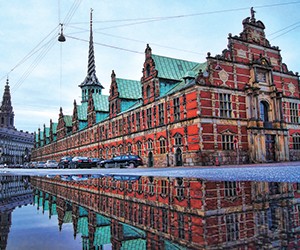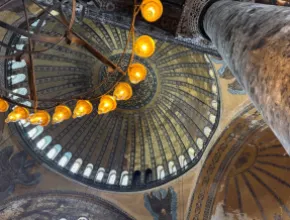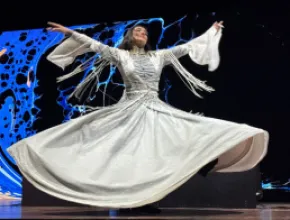The canals, winding cobblestone streets, Arne Jacobsen egg chairs and bicycles—lots of bicycles—were all things I expected on my first trip to Copenhagen. Little did I know this city was also home to a daring culinary scene that is blazing new trails in the farm-to-table movement, some of the world’s most dynamic contemporary and historic architecture, and super-green initiatives that are aiming to make it carbon-neutral by 2025.
Denmark’s capital is hot, and for meeting planners considering Europe, it definitely raises the bar on inspiration and imagination.
“Planners who visit are always amazed at how far ahead of the game we are in terms of sustainability and innovation—thinking outside the box when organizing meetings,” says Christina Andersen, sales and marketing manager, meeting industry, USA, for Visit Denmark, referring to its “Meetovation” concept, aimed at encouraging active involvement, creative setup, local experiences and return on meetings investment. “And they really like the mix of old and new. You could have conferences in cutting-edge, high-tech buildings and do dinners in castles that are hundreds of years old.”
I recently hopped onboard one of SAS Airlines’ direct flights from San Francisco to Copenhagen, a convenient 11-hour route launched last year, to join a meeting planner familiarization trip and experience “Meetovation” in action.
Old-time rickshaws, zippy electric cars, high-speed RIB boats and Clydesdale-drawn carriages were among our varied modes of transport to event venues that embodied the same sense of diversity, especially when it comes to design, not to mention food and drink.
Visit Carlsberg was a cultural standout for its atmospheric Jacobsen Brewhouse and Bar, massive copper beer vats and impressive business center and museum, where a remarkable collection of paintings and statuary provides the backdrop for gatherings.
On a more modern note, Restaurant Soren K at the Royal Danish Library is a sleek, canal-side eatery with an exceptional take on the “new Nordic cuisine” movement sweeping the city, while the industrial Grilleriet, another waterfront space, elevates the art of barbecuing on Weber grills to new heights, and in addition to hosting lunches and dinners, stages cooking classes.
Mixing modern with Baroque, the whimsically chic, high-ceilinged Royal Smushi Cafe is an ode to Danish design icons ranging from Royal Copenhagen to Georg Jensen and Bang & Olufsen, and famous for its open-faced “smushis,” a delicious cross between smorrebrod (Danish sandwich) and sushi. PageBreak
Taking the designer and food theme to another level is the new Kahler restaurant at Tivoli Gardens. The entire space is heaven on Earth for Danish design lovers, with cuisine—all regionally focused, imaginative creations—served on the famous Kahler ceramics, and lighting and furniture by Mid-Century Modern legends like Finn Juhl, Hans Wegner, Arne Jacobsen and Verner Panton.
“We have a few focal points for the meetings and incentives market: design and architecture, sustainability, history and heritage, and the “new Nordic cuisine,” which has done phenomenally well recently, especially with Noma in Copenhagen being the No. 1 restaurant in the world for three consecutive years, and now it’s No. 2, and all of the other great Michelin-star restaurants in the Copenhagen area,” Andersen says.
Meetings-oriented hotels are also setting the city apart from a culinary, design and sustainability standpoint.
In the heart of the city, Hotel d’Angleterre, originally built in 1755, reopened last May after a massive restoration project that preserved the original ornate features while adding plush interior design elements and one of the hottest restaurants in the city: Marchal, helmed by star chef Ronny Emborg (see Zoom In sidebar). The 90-room property is a find for upscale meetings and incentives, with venues such as the historic Palm Court and Louis XVI Ballroom.
At the opposite end of the spectrum, the ultra-modern Bella Sky Comwell is an architectural head-turner, soaring 23 stories over a flat expanse of verdant land and accessible via a 10-minute light rail trip from the city center. With 814 designer rooms, it’s the largest hotel in Northern Europe and steps away from the comprehensive Bella Center conference facility. Panoramic views from guest rooms and the top-floor Sky Bar give visitors the sense of floating in mid-air. The property’s Earth-friendly features include a “living wall” in the lobby and 600,000 bees on the roof, where honey is harvested and used in everything from breakfast spreads to craft cocktails.
Like Bella Sky, other stylish hotels that are particularly green-oriented and exceptional choices for meetings are the Crowne Plaza Copenhagen Towers, the first hotel in Denmark to generate all of its power from renewable sources; the Hilton Copenhagen Airport Hotel; the Palace Hotel Copenhagen; and the Copenhagen Marriott, strikingly set along the canal by Kalvebod Brygge.
“You don’t have to put much extra effort into making your meeting green and sustainable here,” Andersen says. “It’s just an integral part of the way our hotels, venues and entire city do things.”







